February 8, 2012 7:00 AM CST
What you may not know is that new, easy-application air and water barriers have opened the door for some enterprising mason contractors to get in on the action.
While exact figures on air barrier industry expansion are hard to find, a growing list of states – eight so far, according to the Air Barrier Association of America – require air barriers as part of their commercial energy codes. Three more states have them under active consideration.
Other states, like California, have enacted building-energy codes that are impossible to meet without effective air barrier installations.
It’s certainly no secret that construction professionals are paying more attention than ever to the creation of energy-efficient building envelopes that resist and control water penetration, which is hard to do without effective air and water barriers.
But until about five years ago, peel-and-sticks, and fabric wraps dominated the air barrier industry. While their effectiveness at creating a seamless, continuous and durable barrier to air and water leakage through the building envelope can be debated, one thing is clear. No respectable brick-and-mortar man wanted to spend time installing them.
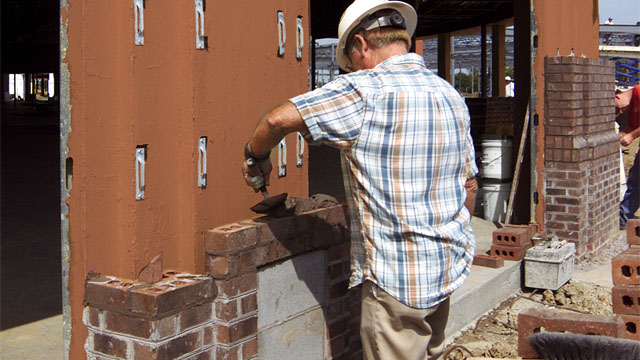
Dennis says his firm began installing about five years ago, when the “new breed” of sprayable, water-based air and water barriers first appeared. He explained that these new products make installation fast, easy and “worth it.”
Products that can be sprayed or rolled onto structural walls or CMU back-up makes air barrier installation less like hanging wallpaper and more like simple painting.
“Self-performing” the application just about always costs less than subbing it out, Dennis says. It also gives the mason contractor more control at the jobsite. Obviously, a sub who gets delayed installing the air barrier also delays the masonry installation.
Ed Purdy, VP and Co-Owner of Purdy Masonry, Zionsville, Ind., says his company has installed air barriers for about five years, too, and for the same reasons as Ziolkowski: cost and control.
“We usually had to supply the scaffolding and other equipment anyway,” Purdy says, “so why not do it ourselves?”
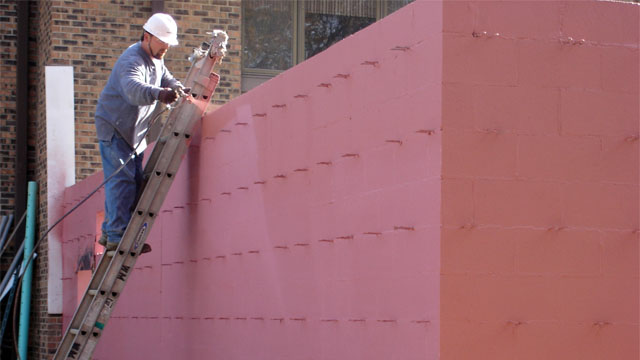
“Our first job was about five years ago,” Dennis said. “We applied a sprayable product to CMU back-up at the riding stables at Culver Military Academy in northwestern Indiana. Then we put up a brick veneer with a stone base.
“The air barrier installation went perfectly,” he continued. “That was due in large part to the training our guys got from the manufacturer beforehand.”
Though product data sheets and instructions usually are comprehensive and informative, there’s no substitute for hands-on training, especially when you’re doing it for the first time. Even the best product literature won’t help you understand how important it is to connect your air barrier to the roof and to the slab or below-grade waterproofing.
The printed page can’t give you the “feel” of how to correctly spread or tool the material. You can only get that by trial-and-error experience, or through training and practice.
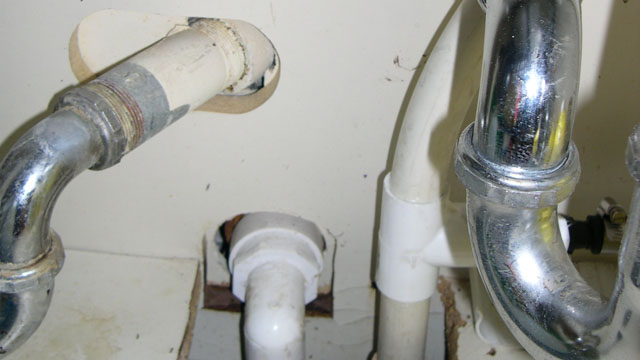
But if the structural sheathing or CMU backup is covered, continuously and seamlessly, with an air and water barrier, that air can’t go any further. It can’t get in through seams, joints and connections of the structural wall to possibly condense in the cool inner recesses of the wall assembly.
In cold weather, warm, moist air from living spaces leaks into the wall assembly via electrical and plumbing penetrations, or any other opening it can find. If there is a pathway to the great outdoors, even indirectly, via those seams, joints and connections in the structural wall, you’ve got an air stream of energy dollars blowing out of the building. It’s the same as if you left a door or window open. Air barriers stop those streams, cut energy costs, and return the work of air exchange to the HVAC system, where it belongs.
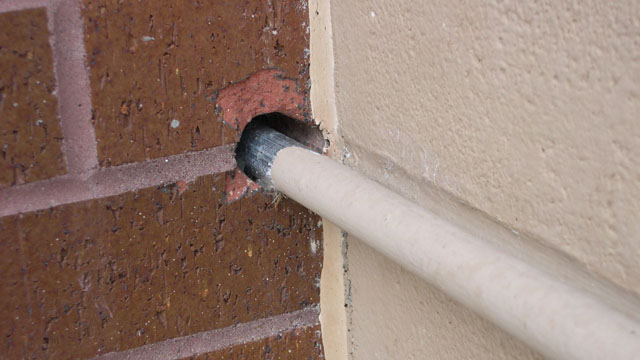
Adhesion and durability also have advanced. The newest air and water barrier products can withstand weather conditions up to and exceeding Category 5 hurricanes, even before the cladding goes up. Torn fabric wraps flapping in the breeze, which means a compromised air barrier, can be relegated to the past.
Detailing rough openings has long been a complicated procedure, whether with fabric wraps, peel-and-sticks, or even older editions of fluid-applied barriers.
Now it’s just a matter of gunning the product on and spreading it out. With minimal manufacturer’s training, mason contractors are positioned uniquely to add to their bottom lines, by taking on newly simplified and increasingly effective and durable air and water barrier installations.
“We’ve done about 50 air and water barrier installations since that first job,” Dennis said. “If we can do them, we will do them.”
New breed
How the latest air barrier technology helps contractors get bigger slices of project pies
By Gary Henry
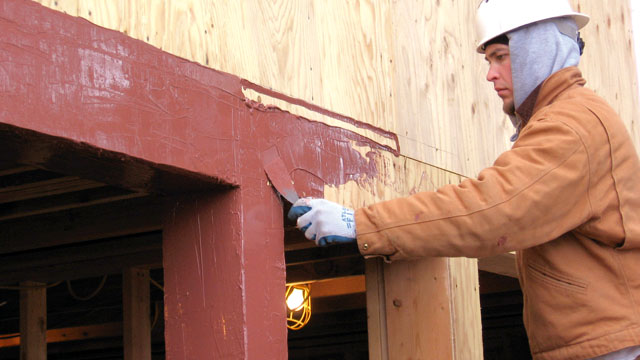
A technician demonstrates the ease of detailing rough openings with the “new breed” of air and water barrier products. Just gun it on and spread it out – no complicated tapes, fabrics or peel-and-stick membranes.
You probably already know that air and water barrier manufacture and installation are of the few expanding construction areas.What you may not know is that new, easy-application air and water barriers have opened the door for some enterprising mason contractors to get in on the action.
While exact figures on air barrier industry expansion are hard to find, a growing list of states – eight so far, according to the Air Barrier Association of America – require air barriers as part of their commercial energy codes. Three more states have them under active consideration.
Other states, like California, have enacted building-energy codes that are impossible to meet without effective air barrier installations.
It’s certainly no secret that construction professionals are paying more attention than ever to the creation of energy-efficient building envelopes that resist and control water penetration, which is hard to do without effective air and water barriers.
But until about five years ago, peel-and-sticks, and fabric wraps dominated the air barrier industry. While their effectiveness at creating a seamless, continuous and durable barrier to air and water leakage through the building envelope can be debated, one thing is clear. No respectable brick-and-mortar man wanted to spend time installing them.

A mason lays brick over a Densglass structural wall coated with a red, fluid-applied air and water barrier. Mason contractors are discovering the benefits of installing air barriers themselves, rather than subbing it out.
Air barriers and mason contractors
“We won’t get involved with air barrier installation when fabric wraps or peel-and-sticks are specified,” says Brad Dennis, Ziolkowski Masonry, South Bend, Ind. “That level of difficulty and complexity isn’t worth our time. We’ll sub those out.”Dennis says his firm began installing about five years ago, when the “new breed” of sprayable, water-based air and water barriers first appeared. He explained that these new products make installation fast, easy and “worth it.”
Products that can be sprayed or rolled onto structural walls or CMU back-up makes air barrier installation less like hanging wallpaper and more like simple painting.
“Self-performing” the application just about always costs less than subbing it out, Dennis says. It also gives the mason contractor more control at the jobsite. Obviously, a sub who gets delayed installing the air barrier also delays the masonry installation.
Ed Purdy, VP and Co-Owner of Purdy Masonry, Zionsville, Ind., says his company has installed air barriers for about five years, too, and for the same reasons as Ziolkowski: cost and control.
“We usually had to supply the scaffolding and other equipment anyway,” Purdy says, “so why not do it ourselves?”

A fluid-applied air and water barrier is applied to CMU back-up on an addition at United Methodist Church, New Lenox, Ill. The installer is a pressure-washing company sub-contractor, but there is no reason the work couldn’t have been done by the mason contractor.
Manufacturer backup
Ease of installation isn’t the only factor Dennis says is important in deciding whether to take on air barrier installation. He says the specified air barrier products must be readily available and have first-class manufacturer backup. That includes formal, hands-on training in the products for his crews, and no-cost jobsite and telephone technical assistance.“Our first job was about five years ago,” Dennis said. “We applied a sprayable product to CMU back-up at the riding stables at Culver Military Academy in northwestern Indiana. Then we put up a brick veneer with a stone base.
“The air barrier installation went perfectly,” he continued. “That was due in large part to the training our guys got from the manufacturer beforehand.”
Though product data sheets and instructions usually are comprehensive and informative, there’s no substitute for hands-on training, especially when you’re doing it for the first time. Even the best product literature won’t help you understand how important it is to connect your air barrier to the roof and to the slab or below-grade waterproofing.
The printed page can’t give you the “feel” of how to correctly spread or tool the material. You can only get that by trial-and-error experience, or through training and practice.

Air-carried energy dollars begin their escape from living and working spaces through penetrations like these underneath a sink. Unless there’s a seamless, continuous, durable air barrier to stop it, that expensively conditioned air will find a way to leave the building, just the same as if you left a window or door open.
How air barriers work
Air barriers work by covering all openings in the structural walls of buildings. They are, simply, barriers to air. In hot weather, warm, moist air tries to get in walls through weepholes, failed mortar joints and other penetrations in the masonry veneer.But if the structural sheathing or CMU backup is covered, continuously and seamlessly, with an air and water barrier, that air can’t go any further. It can’t get in through seams, joints and connections of the structural wall to possibly condense in the cool inner recesses of the wall assembly.
In cold weather, warm, moist air from living spaces leaks into the wall assembly via electrical and plumbing penetrations, or any other opening it can find. If there is a pathway to the great outdoors, even indirectly, via those seams, joints and connections in the structural wall, you’ve got an air stream of energy dollars blowing out of the building. It’s the same as if you left a door or window open. Air barriers stop those streams, cut energy costs, and return the work of air exchange to the HVAC system, where it belongs.

This penetration serves as both entrance and exit for air leaking through the building envelope. A seamless, continuous, durable air and water barrier interrupts that flow and keeps the building envelope working as it should.
Latest advances
A common limitation for air and water barriers has long been that they could only be applied to dry surfaces. The means delays while crews wait for rain-soaked structural walls or CMU back-up to dry out. The newest products can go on surfaces wet or dry, eliminating many weather-related delays. They are instantly waterproof as well.Adhesion and durability also have advanced. The newest air and water barrier products can withstand weather conditions up to and exceeding Category 5 hurricanes, even before the cladding goes up. Torn fabric wraps flapping in the breeze, which means a compromised air barrier, can be relegated to the past.
Detailing rough openings has long been a complicated procedure, whether with fabric wraps, peel-and-sticks, or even older editions of fluid-applied barriers.
Now it’s just a matter of gunning the product on and spreading it out. With minimal manufacturer’s training, mason contractors are positioned uniquely to add to their bottom lines, by taking on newly simplified and increasingly effective and durable air and water barrier installations.
“We’ve done about 50 air and water barrier installations since that first job,” Dennis said. “If we can do them, we will do them.”
About the Author
Gary Henry is a business communication specialist with PROSOCO, a national manufacturer of products for cleaning, protecting and maintaining masonry, concrete and stone. For more information, contact Gary Henry at 785-830-7343, or e-mail ghenry@prosoco.com.
Photos courtesy of PROSOCO.


















